
LEIGH PEAKE
Real World, Real Science
NNX16AB94A
On March 16, 2020 GMRI closed the doors of our informal learning experience, LabVenture. In the weeks that followed we watched a tsunami of digital resources flow at teachers. The creative and generous offerings had the unintended consequence of overwhelming teachers at a moment when they were primarily focused on the more basic tasks of shifting to teaching remotely. Hearing about this from our network of teachers, GMRI decided to go a different direction and offer teachers a break – we would take over their classes for an hour a day for a week and deliver a digital field trip experience. This set in motion what has been a yearlong experience in adapting to teachers’ needs during constantly shifting conditions in schools and communities. This video describes our initial response in Spring 2020 – LabVenture Express – as well as the evolution of those offerings in the year that followed. We touch on the content elements that formed the foundation of the program, the response from students and teachers, the impact on our informal educators as they shifted to online delivery, and the process of iteration in response to changing needs. The video focuses in particular on our struggle to take the design principles that have been the foundation of GMRI programming for 15+ years and translate that to online delivery. We also pay special attention to the partnership between GMRI educators and teachers that has made the program work – from adaptive scheduling, to solving technology challenges, to iterating the program itself.
Real World, Real Science
NNX16AB94A
On March 16, 2020 GMRI closed the doors of our informal learning experience, LabVenture. In the weeks that followed we watched a tsunami of digital resources flow at teachers. The creative and generous offerings had the unintended consequence of overwhelming teachers at a moment when they were primarily focused on the more basic tasks of shifting to teaching remotely. Hearing about this from our network of teachers, GMRI decided to go a different direction and offer teachers a break – we would take over their classes for an hour a day for a week and deliver a digital field trip experience. This set in motion what has been a yearlong experience in adapting to teachers’ needs during constantly shifting conditions in schools and communities. This video describes our initial response in Spring 2020 – LabVenture Express – as well as the evolution of those offerings in the year that followed. We touch on the content elements that formed the foundation of the program, the response from students and teachers, the impact on our informal educators as they shifted to online delivery, and the process of iteration in response to changing needs. The video focuses in particular on our struggle to take the design principles that have been the foundation of GMRI programming for 15+ years and translate that to online delivery. We also pay special attention to the partnership between GMRI educators and teachers that has made the program work – from adaptive scheduling, to solving technology challenges, to iterating the program itself.
-
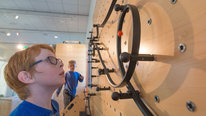 Engineering Explorations
Engineering Explorations
Danielle Harlow
-
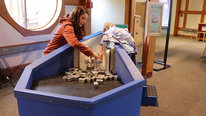 3 Ways Embodied Learning Can Improve Informal Sci. Learning
3 Ways Embodied Learning Can Improve Informal Sci. Learning
Susan Foutz
-
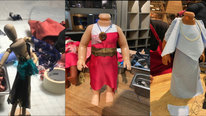 Bringing Out the Math in Making
Bringing Out the Math in Making
Andee Rubin
-
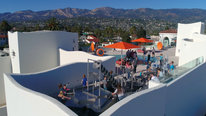 Informal STEM Facilitator Training Program
Informal STEM Facilitator Training Program
Ron Skinner
-
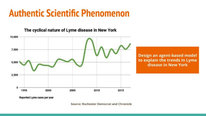 Decoding Urban Ecosystems: CT in Middle School STEM
Decoding Urban Ecosystems: CT in Middle School STEM
Preeti Gupta
-
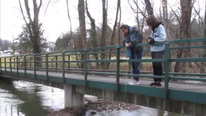 Remote Sensing: STEM Activities Progress Despite COVID
Remote Sensing: STEM Activities Progress Despite COVID
Betsy Stefany
2577 Views
Continue the discussion of this presentation on the Multiplex. Go to Multiplex
2577 Views
presentation
has been viewed
Related videos you might be interested in...
-
 Engineering Explorations
Engineering Explorations
Danielle Harlow
-
 3 Ways Embodied Learning Can Improve Informal Sci. Learning
3 Ways Embodied Learning Can Improve Informal Sci. Learning
Susan Foutz
-
 Bringing Out the Math in Making
Bringing Out the Math in Making
Andee Rubin
-
 Informal STEM Facilitator Training Program
Informal STEM Facilitator Training Program
Ron Skinner
-
 Decoding Urban Ecosystems: CT in Middle School STEM
Decoding Urban Ecosystems: CT in Middle School STEM
Preeti Gupta
-
 Remote Sensing: STEM Activities Progress Despite COVID
Remote Sensing: STEM Activities Progress Despite COVID
Betsy Stefany
Leigh Peake
Chief Education Officer
Welcome to our video! The focus of our video is far from unique. Indeed, it's about a transformation that was executed by thousands of institutions across the country and across the globe in response to the pandemic -- turning an in-person informal experience virtual. We are eager to talk with other institutions who did likewise, as well as those who decided not to. What did you learn? What choices and trade-offs did you make? How did you manifest your design principles and goals in the virtual environment? How will your in-person experience change as a result of a year in the virtual world? Thanks, in advance, for everything I know we'll learn from the discussion!
Janelle Johnson
Pendred Noyce
Hi Leigh,
What a job to transfer everything to the virtual world! And how nice that this year's crop of students didn't have to miss their GMRI experience! I'm especially interested in the experiences you created that can be done asynchronously and independently by students, and by your SEL openers. As we are working in an afterschool environment, we don't ask kids to do anything on their own offline, and I'm not sure if that would work in the absence of classroom accountability. As for SEL, we essentially try to address pandemic anxieties and stresses through literature and the different viewpoints it brings.
Also, what has surprised your Stanford and EDC researchers?
Janelle Johnson
Leigh Peake
Chief Education Officer
Thanks Penny! I will ping the Stanford and EDC folks to have them weigh in with observations. And thanks for picking up on the SEL piece. It really was our amazing LabVenture Educators who added that to the experience because it was so apparent the kids needed it. I guess that's another example of trying to stay fleet of foot and adapt as we went.
Jackie DeLisi
Hi Penny, Great question! Our EDC team conducted observations of the LabVenture Express experience last May and we conducted interviews with two teachers whose students had attended this program. One aspect of the program that stood out to us is how quickly the GMRI team was able to adapt programming in ways that stayed true to the interactive and hands on nature of the in-person field trip. For example, GMRI educators engaged the youth in discussions, incorporated polls, and enabled students to examine lobster and trace the sea surface temperature in ways they would have also experienced in person. During a school year when many students are challenged to attend virtual school, we witnessed students actively participating and asking educators questions and manipulating data. One other surprise is that the teachers told us that this opportunity provided a model for their own learning about how to engage students in a virtual environment.
Marcello Rossi
Leigh Peake
Doris Chin
Hi, Penny. Our Stanford team observed sessions of LabVenture Express, as well as the two Microlabs focused on plankton and lobster, this past February and March. The GMRI team built in multiple avenues and opportunities for the students to participate throughout each of the experiences, so I guess I would have to say that we were more impressed than surprised by the level of engagement exhibited by the students. :)
As pointed out in the video, each session had an SEL opening question that was shown on the screen as students entered the room (e.g. What is your favorite class? What hobby or skill would you like to learn?). The student could answer in the chat window, and the educators could both respond 1-1 in the chat and also provide some “play-by-play” of the action by verbally sharing out people’s responses (chat between students was disabled). What did surprise us was hearing from the educators that they felt they actually got to know the students better and had more personal interaction with them in the online experience than during the in-person experience. The educators we talked to attributed this mainly to the chat functionality because it allowed 1) *all* students a safe place to contribute, even the more shy ones who would not normally raise their hands during the in-person experience to ask/answer a question, 2) similar responses from multiple students (vs in-person, where students would drop their hands because “someone else took my answer”), and 3) an easy way to respond quickly to individual students. They also felt that the embedded assessment (Zoom polls and Kahoot games) provided more explicit data on student understanding during various activities and could thus adjust their teaching accordingly.
Molly Auclair
I have certainly seen how the new approach to the LabVenture program has positively impacted teachers and students across Maine. The virtual offerings have been mentioned many, many times in the Regional Teacher Communities I work with. I wonder what elements of this virtual programming stand out to others? The ease of classroom integration, lower barrier to participation, more direct contact with practicing scientists? What do others think?
Leigh Peake
Chief Education Officer
Great questions, Molly -- thanks for raising them. Interested to hear what others think!
Daniel Zietlow
One thing that stood out to me with your work (and other virtual programs I've worked on / seen) is the benefit of direct contact with scientists. It really seems to humanize us in ways that maybe more formal events haven't in the past. Cool work!
Marcello Rossi
Leigh Peake
Chief Education Officer
Agreed 100%. Particularly near-peer scientists -- our post-docs and/or quantitative technicians who are earlier in their careers have had differential impact with students, I think. I also think providing a specific context in which the scientist is featuring their work helps -- it forces the scientist to connect their work to the learning sequence in which students are engaged. Itthe conversation typically doesn't stay put in that arena, but it's a great starting point.
Daniel Zietlow
That's a great point about near-peer scientists! Regarding your discussion question about things we're working to change with our virtual programs, one thing we want to do this year is be more deliberate about building the relationship between a cohort of interns (through smaller group breakout rooms, encouraging offline chat, starting meetings with silly games, etc.). Does anyone have some things that worked for them for building sustained connections in a virtual world?
Marcello Rossi
Lin Chambers
I talked to an intern whose mentor had a daily afternoon tea with her group of students. Virtual, of course.
Leigh Peake
Daniel Zietlow
Great idea!
Karen Mutch-Jones
Senior Researcher
I know that the physical LabVenture experience is so engaging--I can only imagine the challenge of quickly designing a virtual alternative. It sounds like LabVenture Express was successful and provided new learning opportunities for the educators and students alike! Thank you for giving us a sense of the changes and challenges through your video. I am wondering what type of feedback you received from teachers? When I heard that a research scientists joined a class every day of a week for an hour, I wondered if this arrangement offered a chance to get to know students a little better...or a in a different way? Or if entering the classroom, so to speak, provided GMRI staff/scientists with a new perspective? Kudos for being so responsive to teachers and students and for connecting them to the outside world through a Gulf of Maine learning experience.
Leigh Peake
Chief Education Officer
You hit an important point spot-on, Karen. Our LabVenture Educators universally said that the virtual environment gave them the opportunity to interact with youth on a much different level than is allowed in the 50-person in-person experience. The chat function -- including private messaging to instructors, which we allowed -- made for a much stronger sense of where kids are getting lost/confused. Kids being kids -- snarky, funny, saucy -- it also made for some HILARIOUS posts that Educators would share with the team after. I'm hoping some of the Educators lurking in the Showcase will weigh in here.
The scientist visits (including a separate Scientist to Go series also offered weekly to a larger crowd of kids across the state) was a huge hit. And, again, seeing their questions to scientists gave us a window into what interests them most about the Gulf of Maine and about STEM. We also pushed ourselves to do some events for specific audiences -- for example, a Scientist to Go session solely for the Tribal schools in Maine that featured Cultural Knowledge Keepers through our partner Wabanaki Youth in Science. These are all things we will be trying to figure out how to offer (and staff/resource) in the coming year.
Thanks so much for the comments and questions!
Karen Mutch-Jones
Senior Researcher
Thanks for sharing more about the educators' experience, Leigh. I bet you have staff who are looking forward to analyzing student comments! I'm impressed by the ways that Scientist to Go sessions (and other programming) were especially responsive to individual communities. Having a meaningful science experience that resonates in other ways, during a year of challenges, must have been good for the brain and spirit (for researchers and students alike!). I'm glad to hear that you will continue to build on this work. Best wishes!
Leigh Peake
Holly Morin
Well done Leigh and GMRI! That last statement has stuck with me- given the success of these virtual programs, perhaps they have become a way to reach more rural groups that can't make it to Portland to visit LabVenture in person (??) OR, could these be used to connect with other teachers/classes outside of Maine, creating a broader New England cohort (for example) engaged in GMRI's content?
The Inner Space Center and NOAA Ocean Exploration also found teachers to be pleased with virtual engagements offered this past year, and participating teachers expressed an interest in continuing virtual PD programs even when in-person programs resumed. I feel this pivot to virtual programming has offered another, flexible tool in the STEM ed toolbox to broaden the scope of our engagements and really meet teachers and students where they may be at, at a certain point in time.
Leigh Peake
Chief Education Officer
Great to hear your experience, Holly. We are all going to need to get creative and reflective to figure out what to keep/toss. We are bearing down keenly on the question of: What is the incremental benefit of students being live at a working marine laboratory and how can we push on that benefit even more, even as we are achieving other things virtually.
It's also worth noting that over the past year there hasn't been a single model of "virtual." Last spring we could pretty much count on kids & teachers all being at home. This past year we've seen everything -- from all virtual at home, to split classes (small groups in person while others are at home), to alternating schedules and, recently, back to in person. Figuring out a way to design programming for that mix has been challenging but also caused us to parse and modularize content in ways that might hold affordance going forward.
Holly Morin
Leigh Peake
Chief Education Officer
Just FYI: Wanted to share out a Portion of Online LabVenture Express Experience that you all can play with. Specifically, these are some of the online interactives that were adapted from the in-person experience.These were complemented by activities and discussions run by the Educators as well as session with scientists.
Another point of adaptation and trade-off was that some of the information that is simply presented to students in this version (for example, the thermal habitat displayed as a chart and accompanying text) is deciphered by them in a more inquiry fashion during the in-person experience. Would be interested in thoughts about the challenges of those kinds of trade-offs.
Jan Mokros
I love that you will continue to use a hybrid model once you open up again. It seems like this will help not only reach additional schools, but also reinforce learning that happens in person. (Kids and teachers will be able to come back to what they learned.) And you will be able to reach home-bound students at the same time. Great job of capitalizing on the opportunity presented by a crisis!
Holly Morin
Leigh Peake
Chief Education Officer
Thanks so much, Jan -- now we just have to figure out what exactly to carry forward! What will really extend the learning outcomes? Whether to an audience not reached previously or to support learners who need extra time/support with the content.
Holly Morin
Eric Pyle
Professor
Thank you for a compelling lesson on adaptability and continued engagement. Like Jan, the continuation of the hybrid model is interesting and should be able to engage students who otherwise have no access to, or in fact little concept of, the ocean system. What have your partners documented in terms of student engagement and learning? After the 5 days with the scientists are complete, then what happens? Do the students keep on with it?
Leigh Peake
Chief Education Officer
I expect our partners to weigh in so will leave some of your questions for them, Eric. One point of clarification: Only 1 day of the five-day sequence features the scientist(s). The other four are synchronous sessions led by our LabVenture educators using online adaptations of the in-person experience.
An interesting note about your point on access. The in-person program is 100% free including transportation. So the LabVenture buses travels the state bringing kids from 5+ hours away to GMRI for the experience. This traditional "superhighway" approach turns out to be more equitable than the information superhighway since much of rural Maine does not have reliable broadband. Nevertheless, you are 100% correct that the virtual experience may enable us to reach the ~25-30% of the annual grade cohort we don't currently host in-person.
Marcello Rossi
Catherine Haden
Great job, Leigh and team! What are some lessons learned from the remote and asynchronous work that you think will translate back and enhance GMRI's LabVenture program going forward?
Leigh Peake
Chief Education Officer
I've encouraged some of my colleagues to weigh in with their thoughts. The one that comes to mind immediately for me is right up your alley, having to do with the importance of taking a little time for reflection and providing good tools for that reflection. As you know, reflection on the learning (and documenting reflection) is embedded in the in-person experience but it's always under a certain amount of time pressure based on the total time envelope of the experience. In the synchronous virtual experience Educators didn't feel that same pressure and were able to slow down and allow more time for reflection. As is the case for the in-person experience, the online experience produces a "notebook" of what they did (though in much shorter format). Will be interesting to see if we see different kinds/levels of reflection contrasting the two.
Marcello Rossi
Jeff Bate
One relevant lesson is the value of being able to adapt the program to meet more specific needs of different classrooms, which was necessitated by the changing circumstances this year but was also a bit easier in the virtual environment. As we look toward a return to the in-person experience, we are thinking about how to build in that flexibility, both in the educator-facilitated segments and the content on our digital touch tables.
Leigh Peake
Doris Chin
Another lesson is the value of low-barrier, embedded assessment in the online experience (via Zoom polling and Kahoot games) that provided the GMRI educators with "live" data on students' understanding and allowed them to quickly address misunderstandings during or very soon after the actual activity.
Marcello Rossi
Leigh Peake
Perrin Chick
Leigh
This video certainly captures not only your program but how you weathered the challenges of COVID. What were the hardest aspect of your remote teaching and virtual programs?
Perrin
Perrin
Leigh Peake
Chief Education Officer
Thanks for the question, Perrin. I hope some of my colleagues will weigh in with their perspectives. At the most general level, adapting to the wide variety of teaching schedules and scenarios was quite a hurdle. Where the in-person program is rigorously scheduled for two time slots a day, the virtual program required adaptation to all different combinations of in-person/virtual, days of the week and time slots into which teachers wanted the program to fit, and of course broadband access (as you well know is a challenge in Maine). I'll let the Educators speak to the challenges of instruction itself.
Meredyth
I agree with Leigh that scheduling an accommodating the various restrictions that each school had presented challenges that took some creative thinking. It was also I change for our educators to get use to so much screen time. We all missed the energy of seeing students in person but as mentioned above the positive side of that was being able to interact with the student one on one via chat helped us learn quickly where sticking points were.
Marcello Rossi
Rebecca Bullard-Dillard
What a wonderful idea and such a great service for the teachers. I was one of those who found the choices "overwhelming".
Leigh Peake
Elizabeth Hoadley
Awesome job Leigh and GMRI team! I got my informal EE start in a similar setting to GMRI, and am so excited to hear about the number of ways that science centers have been able to offer substitute experiences for students unable to visit in person during the pandemic so that those students didn't have to completely miss the experience. I really like the approach of offering programs of different durations/commitments to also increase the reach to classrooms with different needs.
Like Holly above, I work with the NOAA Ocean Exploration team and we are also thinking about how to use the virtual products/programs we've produced in conjunction with in-person programs once things open back up. If you end up incorporating some aspect of the virtual as a pre-field trip work, it will be interesting to see how that impacts the onsite programs. I wonder if it would help to pre-orient the students to your programs so that you can spend more time doing science on site! We are currently brainstorming how to use our virtual professional development to engage with educators. We are also planning on continuing to offer the virtual PD so that we can broaden our geographic reach and include teachers unable to travel to our sites for in person events. We haven't quite figured out if we will offer some hybrid version where we have participants do both a virtual and in-person component. This would be really interesting, because like Daniel pointed out above, one of our favorite surprise benefits of the virtual programing is the ability to connect our audience directly with experts in such a relatable way!
Marcello Rossi
Leigh Peake
Chief Education Officer
Great to hear from you, Elizabeth -- we love the NOAA Ocean Exploration team! Our professional development programs didn't skip a beat, really, as they shifted to virtual this year. Perhaps the strong context of "virtual everything everywhere" made it easier to implement and experiment with. I suspect we'll all be working to devise hybrid models going forward. This fall our regional peer teacher communities (serving primarily the rural corners of the state) will have a hybrid version of what is usually a statewide in-person launch. A virtual event with everyone followed by local in-person meet-ups and doing some hands-on science locally. We'll see how it goes.
Maybe the spirit of courageous experimentation at meeting constituents' needs will be the lasting silver lining to the pandemic.
Junell McCall
This is a fascinating learning experience for students to deepen their understanding of science. Excellent presentation.
Leigh Peake
Susan Warshaw
This program enables less affluent school districts to offer special learning experiences without the expense of field trips. It would be interesting research to find out the difference in learning outcomes between live and virtual field trips.
Leigh Peake
Chief Education Officer
Completely agreed, Susan. We would love to do that research! And, yes, providing free transportation has been at the heart of equitable access to the program since 2005. Of course, equitable access doesn't mean equitable outcomes and that continues to be a key challenge we work on each year. Thanks for your note!
Haley Smith
I love to see innovations like this coming out of the pandemic which ultimately may improve the reach of so many programs, especially to more remote and sometimes underserved communities! I'm curious if there is a cost for schools to participate in the program, or if funding is completely internal to GMRI?
Meredyth (GMRI)
Schools and educators can participate in our virtual and in-person programing at no cost to the schools/teachers/students. We do this to ensure that cost is not a barrier to participation, we are very thankful to our sponsors for helping us make that happen!
Sue Allen
Congratulations Leigh & the GMRI team on your creativity in translating this terrific program! I love your point about some of the teacher-student conversations actually being stronger & more equitable over chat. Have you noticed any change now that the students aren't working in small groups as they go through the experience? (or are they still?). Another question I have is about kids no longer being able to touch the live lobsters... such an iconic and memorable experience that I know they remember for many years later. Have you found any ways to make that part of the virtual experience feel interactive? e.g. I was thinking that maybe having the youth able to have some control over what they see on the screen (e.g. "Can you turn the lobster over again?" "Can you give us a better look at the claw?" etc).
Jessica Antonez
Hi Sue! I am on the LabVenture team at GMRI and have gotten the chance to work with many of the different school groups over the last year, and we have noticed some differences with students working less in groups. Throughout the program we have created space for some group check ins, where they can compare their data as a group and share their ideas in the chat. This helps replicate some of that feeling of working together, but it is missing in other areas. This is balanced out with the chat in some ways though, as students are more willing to ask questions or for clarifications when they can do it discretely from their peers.
It was really challenging in the beginning to make handling the live lobster engaging and interactive over Zoom. We encourage student questions and engagement in the chat throughout this part of the experience, and try to do exactly what you said. We have students enter the data that they are collecting in a Zoom poll at the end so that they can compare it to their classmates, and ultimately decide if their lobster is legal to keep. We then play a game of Kahoot where they apply the knowledge that they learned from that part. It is definitely different than it is in the Cohen Center, but students do still get excited about the experience and seem to enjoy it!
Tim Spuck
Great video and program Leigh and team! I'm curious if you were able to do any program evaluation where you could compare impact of in-person visits vs. virtual visits? If yes, do you have any conclusions you can share at this time? Thanks!
Leigh Peake
Chief Education Officer
Unfortunately we didn't, Tim, but we are hoping we might still be able to do that since we hope to continue virtual programming. That said, I think evaluation targeting a head-to-head comparison of in-person and virtual would have to be terribly nuanced since the affordances and potential learning outcomes of the two are a venn diagram, not a direct overlap. But still work we believe we have a cool opportunity to pursue. Thanks for bringing it up, Tim!
Tim Spuck
Lara Gengarelly
Leigh and Team,
It's terrific to hear about your team's process and experience adapting LabVentures during COVID. I especially like your point that the remote platform was continually changing and so was your response!
My question relates to how you collect student input on their engagement and learning (during in-person and/or remote)? From my experience, I have found it can be challenging to collect responses from youth participants. So I am wondering what your mechanism is for evaluating impact on K-12 learners.
Great project!
Thanks,
Lara
Leigh Peake
Chief Education Officer
Thanks for the question, Lara (and good to see our UNH/Leitzel neighbors in the house!). In the program presented in the video, we've played around with clicker-based systems as well as more old fashioned surveys and interviews. We even had one amazing volunteer (a retired teacher) observe thousands of kids using an observation protocol focused on engagement. None of these is perfect by any stretch. Going forward, we're building embedded assessments into the system, which of course changing many of the activities to be designed to support assessment. Finally -- we've developed a routine and expectation that students in this program write "thank you" notes to our sponsors/funders. It's the only "cost" of attending. We receive copies of all the notes and they have become an interesting source of data as well. Admittedly, they often reveal quite a bit of coaching by the teachers so, again, are far from perfect. It's a real challenge!
Lara Gengarelly
Lara Gengarelly
Thanks for such a thorough response! I would love to hear more about your embedded assessments at some point. How fortunate you had a volunteer who was able to collect thousands of observations. That's a true gift! We also engage volunteers in a variety of UNH Extension and Sea Grant programs. So it gets me thinking!
Leigh Peake
Chief Education Officer
Yes I popped over to your video but didn't have a chance to post yet! Love the incorporation of volunteers as a support for elementary teachers and CitSci. Brilliant! Happy to talk about embedded assessments any time!
Lara Gengarelly
Lara Gengarelly
Thank you for viewing our video! Let's be in touch.